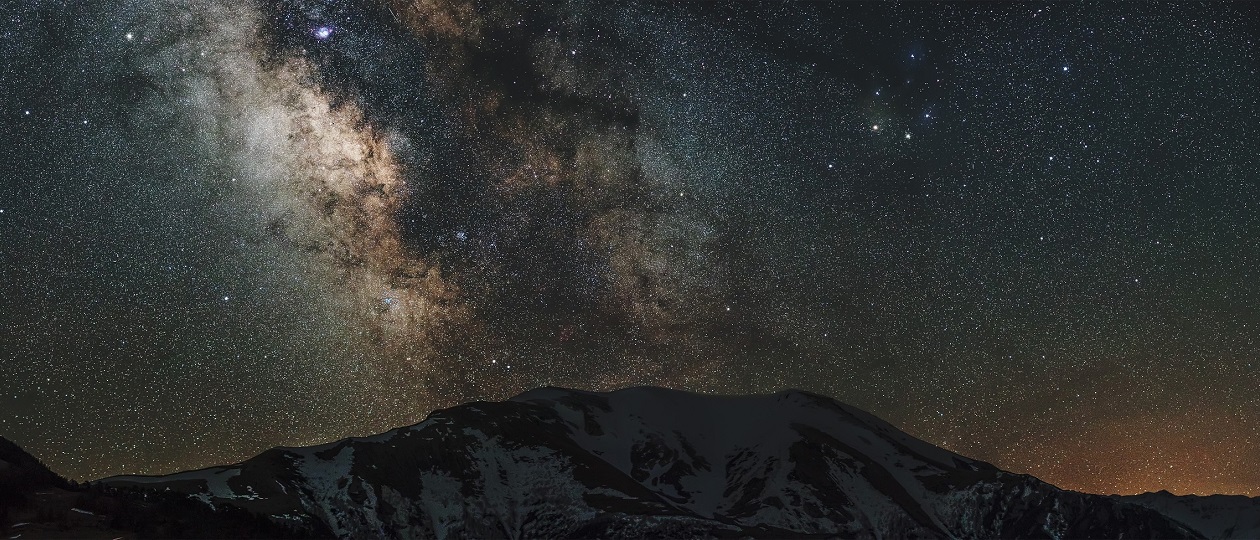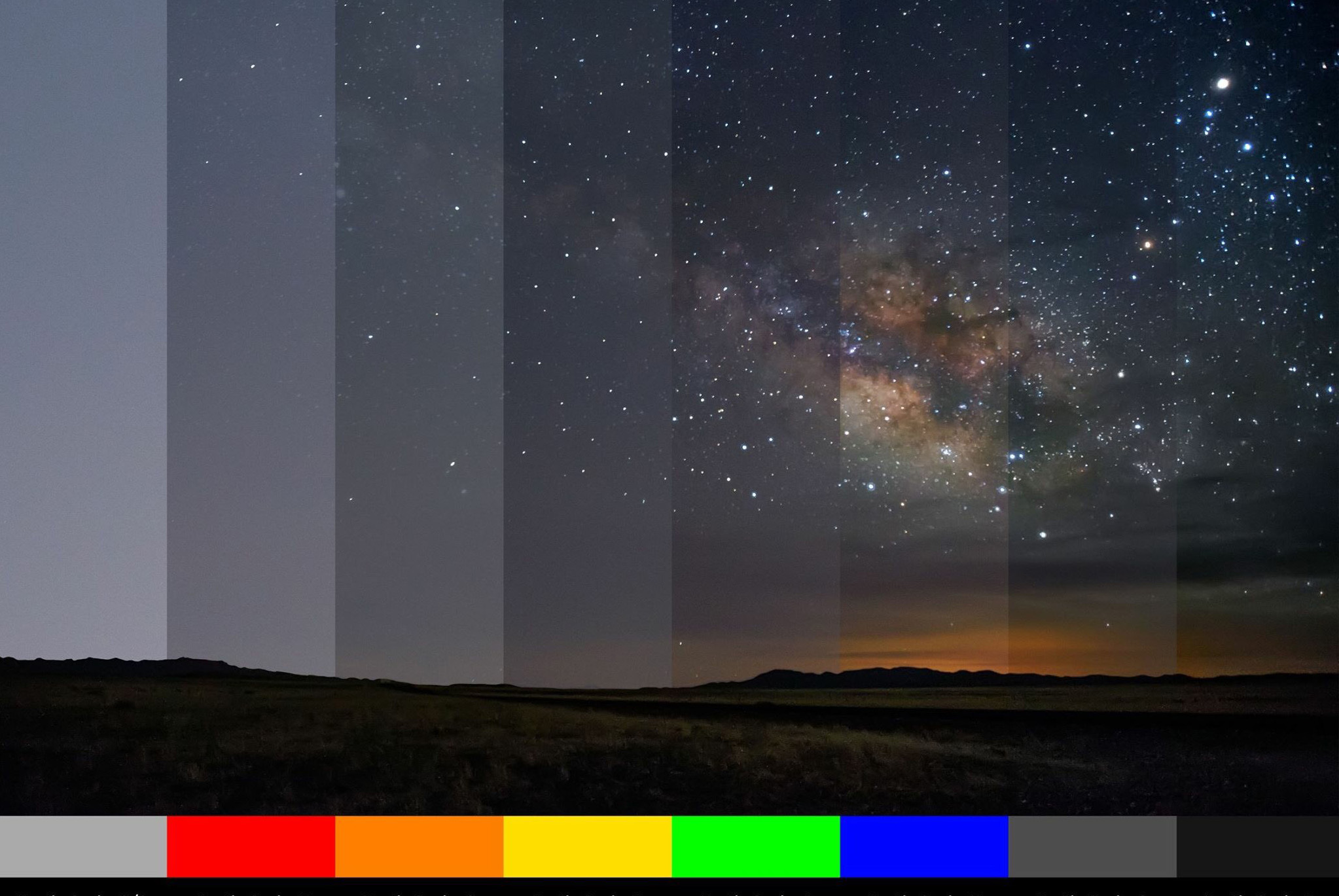
Long gone are the days when in big cities one could admire the countless beauties of the night starry sky.
In clear weather, even an inexperienced observer could have a magnificent view of the outer space around us. Indeed, the sky, illuminated by the occasional city lights, was as accessible as in the countryside.
Due to this, even in the first half of the 20th century, observatories and astronomical stations were still created in large cities for the purpose of scientific observations.
I remember how a few decades ago, in the city, my comrades and I could quite successfully count up to 14 stars in the constellation Cassiopeia with the naked eye, which served as an indicator of the good transparency of the night skies. And the view of the starry sky in the region of the Milky Way from childhood was forever engraved in my memory and determined my passion for astronomy for many years.
So what now? Technological progress has stepped far forward, and the result of this is more and more progressive urban night illumination. This, of course, significantly increases the comfort of residents walking the streets at night, but categorically limits the ability to view the pictures of the universe around us right above our heads.
Weakly luminous space objects are not visible at all. Not in any telescope. And there are city towers of observatories, sometimes with unique optical instruments, which are not used today, although in the recent past they benefited science and enlightenment of citizens who lived not only in the immediate suburbs, but also in the very centers of large cities.
Today, the negative effect of urban night illumination enhances the usual smog for cities, the particles of which create the effect of additional light scattering.
More recently, cities were illuminated by mercury and neon lamps that emitted in a narrow band of the spectrum. And astronomers managed to use special narrow-band filters to suppress such illumination.
However, at present, powerful LED light sources have become widespread, they emit in a wide spectrum and it is no longer possible to filter out such a glow.
Entire generations of people have already grown up who cannot imagine the appearance of the Milky Way. The overexposed night sky, where even the brightest of the stars cannot be found, does not allow the observer to touch the secrets of the universe with his own eyes.
So what to do? Where can you see a real deep dark starry sky? There is only one way out — to move territorially to places with less, and better — with minimal night illumination.
In this case, special City Illumination Maps located on the well-known Internet resource https://www.lightpollutionmap.info will help.

These maps clearly show the zones of night illumination throughout the Earth. The colored zones correspond to the so-called Bortle scale, i.e. the degree of illumination of the sky by the lights of settlements, and the diagram below gives an idea of the visibility of space objects in different zones.

In the red and orange light zones typical of city centers, only the brightest of astronomical objects are available for observation.
Often the most difficult to distinguish are the Moon, other planets of our solar system, and the outlines of the constellations. Penetration is not higher than 4m.
The yellow zone of illumination already allows us to find most of the known constellations, but the Milky Way is not yet visible.
The green zone of illumination, typical for the near suburbs, allows the naked eye to see stars at least 5m and confidently distinguish the Milky Way in the near-zenith region, and even photograph it, including at lower altitudes.
In practice, it is enough to go into the blue zone to be able to successfully observe even the faintest objects of deep space.
Of course, this is if the weather conditions do not create obstacles and the optics are at their best. But even for the naked eye, the observer will see a magnificent spectacle of the bottomless Universe. The Milky Way is available in detail. Penetration is not less than 6m.
For greater clarity, I will give two videos of Sunset.
In the first, the shooting was carried out on the outskirts of the city with a population of 400 thousand people, on the border of the yellow and green zones of illumination. On the right side of the frame — towards the city center, and on the left — towards the periphery. You can see how few stars appear as night falls. And this is for the camera lens, because the eye can see even less.
The second video has already been filmed in the blue zone of illumination, here the Milky Way appears in all its glory with the onset of night. This is the difference.
It should be added that the quality of the sky largely depends on local conditions and relief. The higher the observed point, the greater the chance of avoiding the impact of the surface layers of our atmosphere, which is harmful to observations, especially saturated with moisture and other impurities that worsen transparency. The closest to ideal conditions are formed only in mountainous areas, so to speak, closer to the stars. For the same reason, modern observatories are often installed high in the mountains.
For each particular ordinary amateur astronomy observer, it is very important to find out in practice where he could, far from city lights, carry out certain astronomical observations. For a resident of a not very large city, it is enough to travel a few tens of kilometers, but for a resident of a large metropolis, this distance can be hundreds of kilometers. These are the realities of the current level of light pollution.
When the place for observations is determined, this will allow at the right time to quickly carry out the necessary visual and photographic observations, say, of some extraordinary astronomical phenomenon. Suppose the sky suddenly cleared up and it is possible to capture a passing bright comet in a short time or observe the maximum of a meteor shower. And the most sophisticated observers even register occultations of stars with asteroids, which even bring considerable benefit to science when they share their data with scientists. And the range of possible observations available to modern astronomy lovers is quite wide.
However, the simple satisfaction of curiosity, capable of captivating astronomy, opening for many fascinating pictures of the starry sky, for example, on a collective trip, is already important and contributes to the formation of a scientific picture of the world and interest in science as such.
The lucky ones who have reached the black zone of illumination, especially in the mountains, and even more so, armed with optics, discover a truly enchanting picture of the starry sky.
Thus, if you want to see stars, seek necessary conditions outside of large cities and don’t rely on naked eye.





